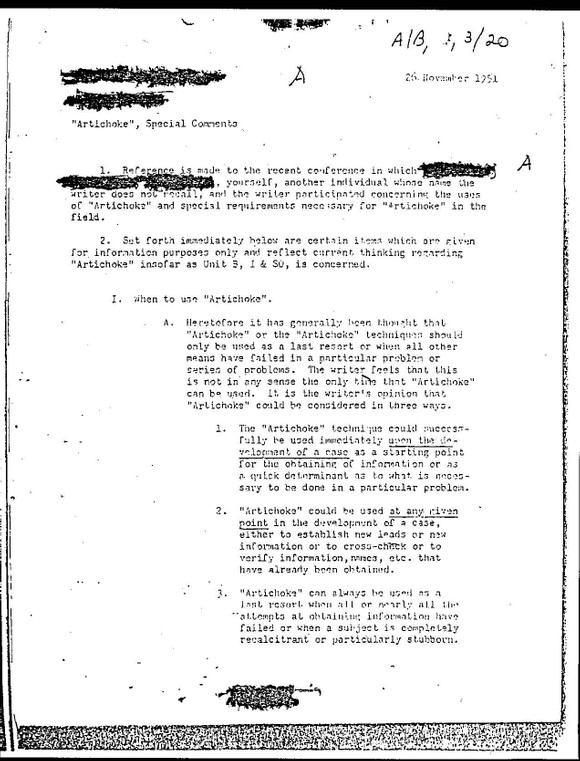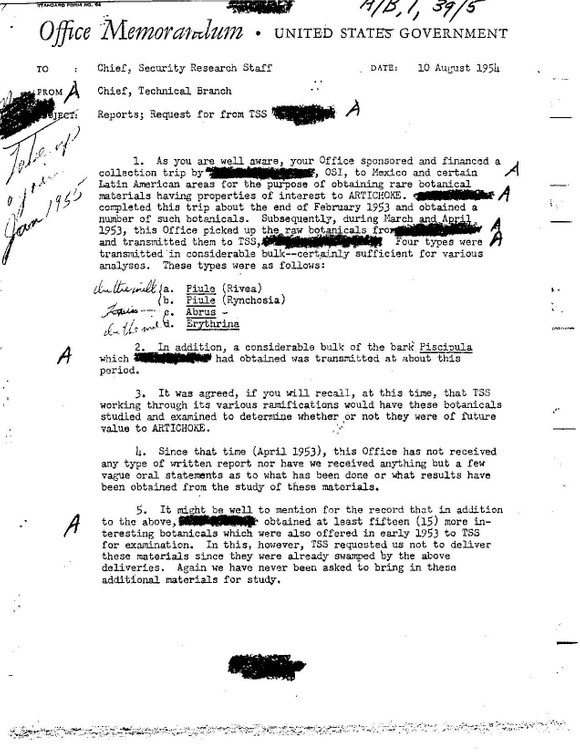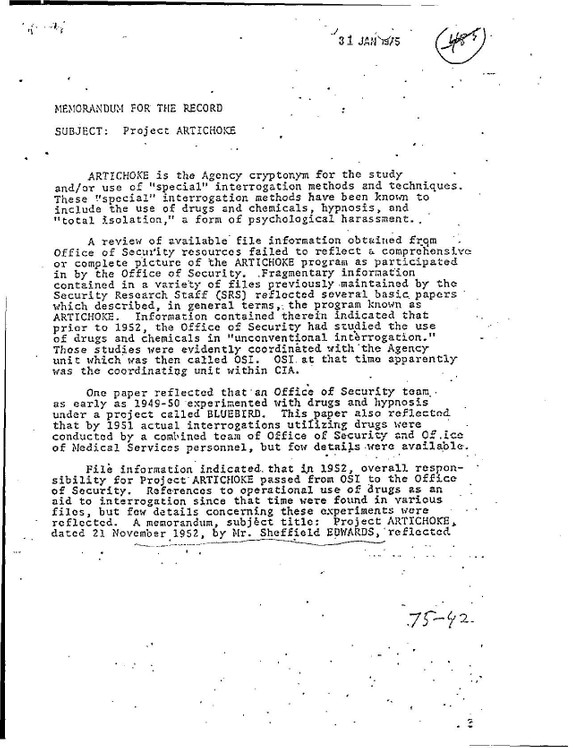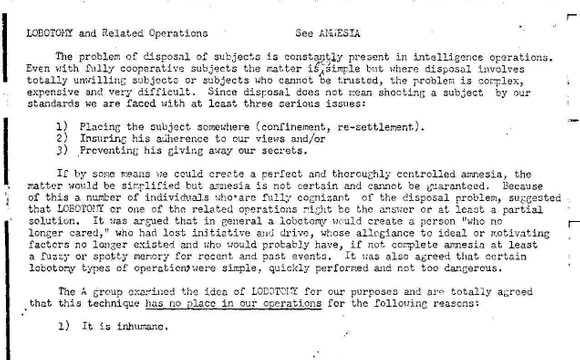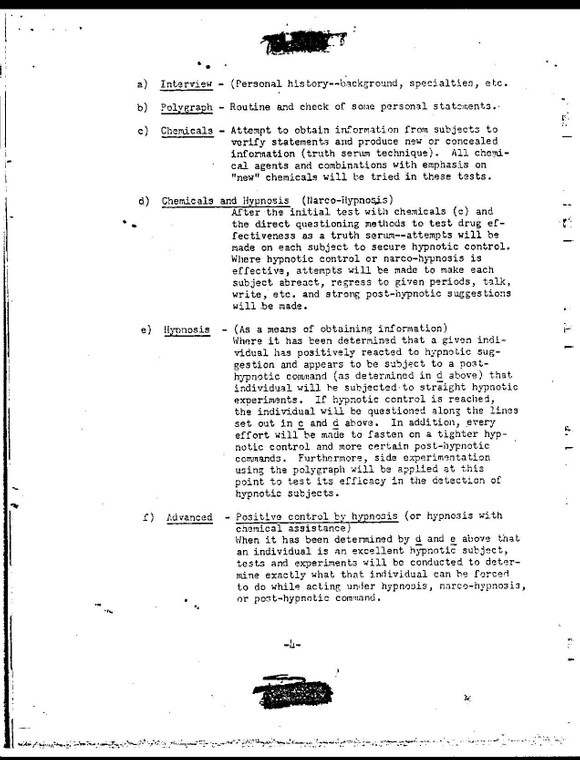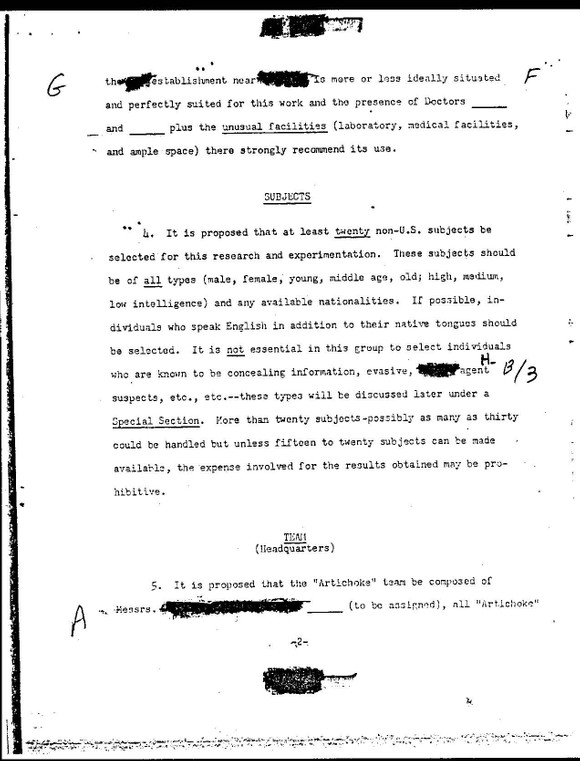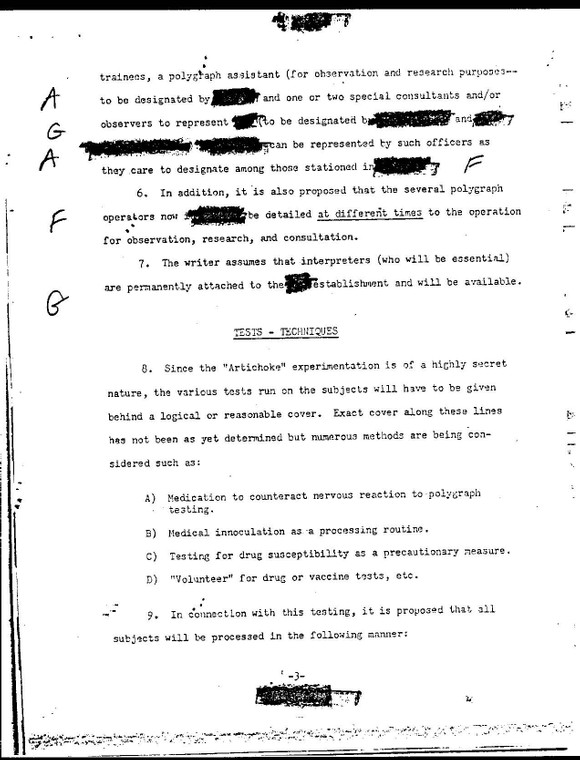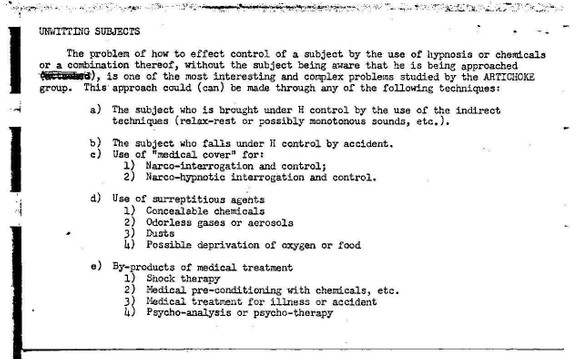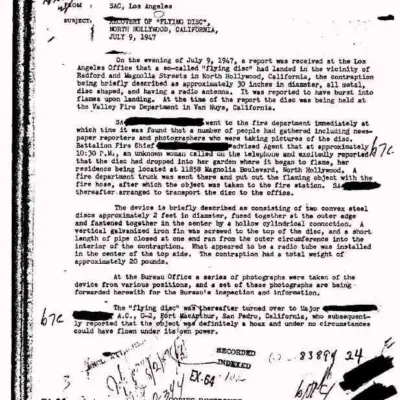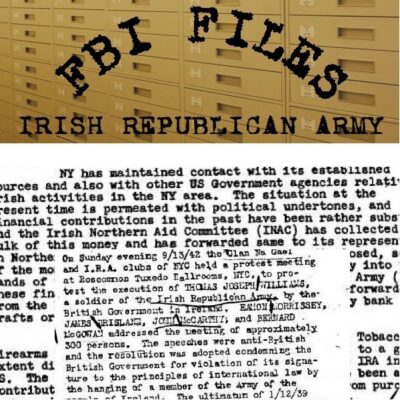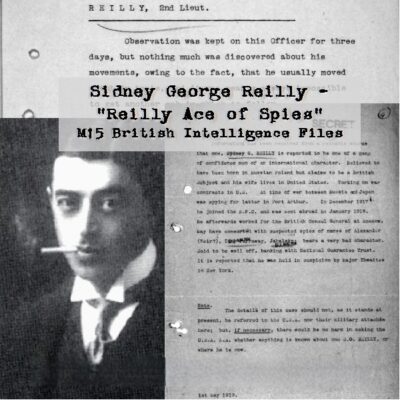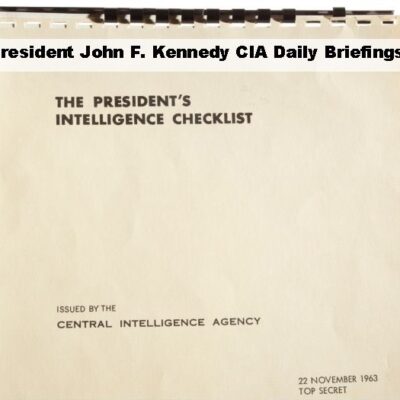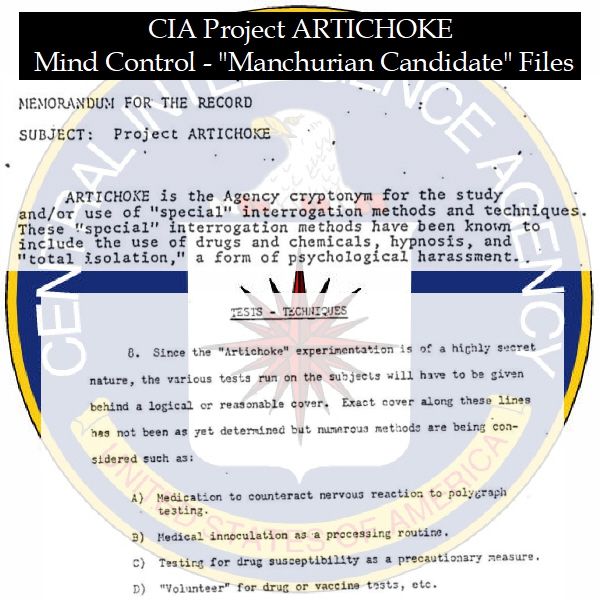
CIA Project ARTICHOKE – Mind Control – “Manchurian Candidate” CIA Files
$19.50
Description
CIA Project ARTICHOKE: Mind Control Experiments
Timeline of CIA Project ARTICHOKE
- 1950: The CIA’s human behavior control program originates under the name BLUEBIRD. This initiative is motivated by perceived Soviet, Chinese, and North Korean use of mind control techniques.
- Early 1950s: Project BLUEBIRD engages in extensive human experimentation, employing drugs, psychological methods, and other means to explore techniques for controlling human behavior.
- 1951: Project BLUEBIRD is renamed ARTICHOKE.
- January 1952: A CIA memo articulates a central question for Project ARTICHOKE: “Can we get control of an individual to the point where he will do our bidding against his will and even against fundamental laws of nature, such as self-preservation?”
- April 26, 1952: A CIA document indicates that ARTICHOKE teams “used heroin on a routine basis” and determined its usefulness in reverse due to withdrawal stresses.
- January 1954: A CIA report poses the question of whether an individual of redacted descent can be involuntarily made to perform an act of attempted assassination under the influence of ARTICHOKE. The target is specified as a prominent redacted politician or, if necessary, an American official. The report notes that this act would be “simulated only” and tested on a non-cooperating foreign national Agency asset through surreptitious drugging with alcohol and the application of ARTICHOKE (presumably hypnosis) at a social meeting. The report states that the success of the assassination attempt was secondary to the overall project’s goals, and the subject would likely be taken into custody and “disposed of” by their government afterward.
- 1959: Richard Condon’s novel “The Manchurian Candidate,” which features an American soldier brainwashed by Communist forces to become an assassin, is published. This highlights a concept the CIA was actively exploring years prior within Project ARTICHOKE.
- 1975: A CIA review of the program describes ARTICHOKE as the Agency cryptonym for the study and/or use of “special” interrogation methods and techniques, including drugs and chemicals, hypnosis, and “total isolation.”
- April 2018: Some material related to Project ARTICHOKE is declassified and released.
Cast of Characters
- CIA (Central Intelligence Agency): The US government agency responsible for initiating and overseeing Project BLUEBIRD and its successor, ARTICHOKE. The source material does not name specific individuals within the CIA who led the project, but refers to the agency collectively and its Office of Scientific Intelligence as the entity running ARTICHOKE.
- Jon Ronson: Author of the non-fiction book “The Men Who Stare at Goats.” He is mentioned in the source for his description of Project ARTICHOKE based on declassified documents, characterizing it as a program focused on “insane, brutal, violent, frequently fatal new ways of interrogating people.”
- Richard Condon: Author of the 1959 novel “The Manchurian Candidate.” His fictional work explored the concept of mind control and assassination, which was a topic of interest and experimentation within Project ARTICHOKE.
- Subject (Foreign National, unnamed): A former Agency asset of redacted nationality who had stopped cooperating with the CIA. This individual was identified as the potential subject for the simulated assassination attempt outlined in the January 1954 report. The plan involved surreptitiously drugging him with alcohol at a social meeting and using ARTICHOKE techniques (likely hypnosis) to induce him to perform the act.
- Redacted Politician (Unnamed): A prominent politician of redacted nationality who was considered a potential target for the simulated assassination attempt.
- American Official (Unnamed): An alternative potential target for the simulated assassination attempt, to be considered if targeting the foreign politician was not feasible.
CIA Project ARTICHOKE – Mind Control – “Manchurian Candidate” CIA Files
1,373 pages of CIA files related to Project ARTICHOKE, the CIA’s 1950’s human behavior control experiment and research program. Some material in this collection was not released until April 2018.
Jon Ronson, the author of “The Men Who Stare at Goats” wrote in his non-fiction work about more recent army experiments, described ARTICHOKE as, “Artichoke is the program that is not fun. Recently declassified documents reveal that Artichoke was all about inventing insane, brutal, violent, frequently fatal new ways of interrogating people.”
The CIA’s human behavior program originated in 1950 and was motivated by Soviet, Chinese, and North Korean use of mind control techniques. Beginning in the early 1950s, the CIA engaged in an extensive program of human experimentation, using drugs, psychological, and other means in search of techniques to control human behavior. The CIA program originated in 1950 under the name BLUEBIRD, which later changed its name to ARTICHOKE in 1951.
A 1975 CIA review of the program described it as, “ARTICHOKE is the Agency cryptonym for the study and/or use of ‘special’ interrogation methods and techniques. These ‘special’ interrogation methods have been known to include the use of drugs and chemicals, hypnosis, and ‘total isolation,’ a form of psychological harassment.”
Project ARTICHOKE also known as Operation ARTICHOKE was run by the CIA’s Office of Scientific Intelligence. The project went deeper into interrogation methods studied in the CIA’s Project BLUEBIRD. ARTICHOKE offensive mind control techniques experiments attempted to induce amnesia and highly suggestive states in its subjects. ARTICHOKE focused on the use of hypnosis, forced morphine addiction, addiction withdrawal, along with other drugs, chemicals, and techniques.
One focus of the program was summarized in a January 1952 CIA memo, “Can we get control of an individual to the point where he will do our bidding against his will and even against fundamental laws of nature, such as self-preservation?”
A CIA document dated April 26, 1952, says Artichoke teams “used heroin on a routine basis” they determined that heroin “can be useful in reverse because of the stresses produced when they are withdrawn from those who are addicted to their use.”
One program experiment attempted to see if it was possible to produce a “Manchurian Candidate.” In Richard Condon’s 1959 novel “The Manchurian Candidate” an American soldier, who has been placed into a hypnotic state by Communist forces, returns home to assassinate on command. Five years earlier the CIA considered the possibility. A January 1954 CIA report asks the question, “Can an individual of [redacted] descent be made to perform an act of attempted assassination involuntarily under the influence of ARTICHOKE?”
Later, the document stipulated that this assassination attempt would be “against a prominent [redacted] politician or if necessary, against an American official.” After “American official” there was a hand written asterisk. At the end of the document, next to another handwritten asterisk, the words “simulated only” were handwritten. According to the memo, CIA operatives would test this theory on a foreign national (his country of origin is redacted) who was once an Agency asset, but had since stopped cooperating
The report states:
“Access to the SUBJECT would be extremely limited, probably limited to a single social meeting. Because the SUBJECT is a heavy drinker, it was proposed that the individual could be surreptitiously drugged through the medium of an alcoholic cocktail at a social party, ARTICHOKE [presumably, hypnosis] applied and the SUBJECT induced to perform the act of attempted assassination at some later date. All the above was to be accomplished at one involuntary uncontrolled social meeting. After the act of attempted assassination was performed, it was assumed that the SUBJECT would be taken into custody by the [redacted] Government and thereby ‘disposed of.’ … Whether the proposed act of attempted assassination was carried out or not by the SUBJECT was of no great significance in relation to the overall project.”
A highlight in this collection is a 200-page ARTICHOKE glossary of terms, phrases, techniques and drugs used in the program.

